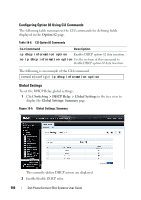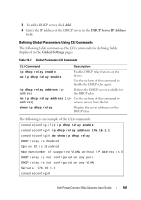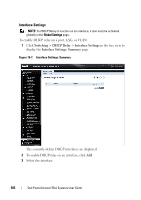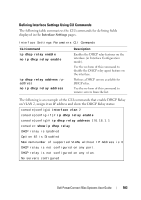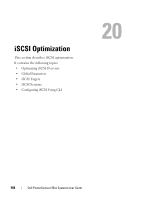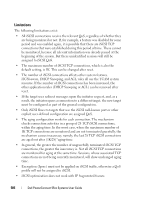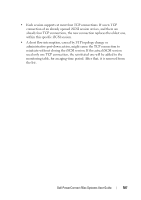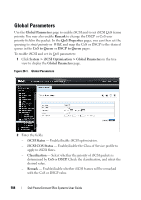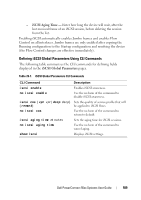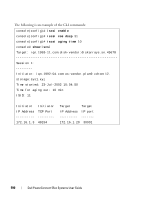Dell PowerConnect 5548 User Guide - Page 585
Optimizing iSCSI Overview, Optimizing iSCSI - wan port
 |
View all Dell PowerConnect 5548 manuals
Add to My Manuals
Save this manual to your list of manuals |
Page 585 highlights
Optimizing iSCSI Overview The Internet Small Computer System Interface (iSCSI) is an IP-based storage networking standard for linking data storage facilities. By carrying SCSI commands over IP networks, iSCSI is used to facilitate data transfers over intranets, and to manage storage over long distances. iSCSI can be used to transmit data over local area networks (LANs), wide area networks (WANs), or the Internet, and can enable location-independent data storage and retrieval. Unlike traditional Fiber channels, which requires special-purpose cabling, iSCSI can be run over long distances, using existing network infrastructure. The protocol enables clients (called initiators) to send SCSI commands (CDBs) to SCSI storage devices (targets) on remote servers. This enables organizations to consolidate storage into data center storage arrays, while providing hosts (such as database and web servers) with the illusion of locally-attached disks. The targets listen on a well-known TCP port (or any other TCP port that has been explicitly specified) for incoming connections. The login process is started when the initiator establishes a TCP connection to the desired target, through the TCP port that was explicitly specified. The group of iSCSI TCP connections that link an initiator with a target is called an iSCSI session. When you connect an EqualLogic device to the switch, and iSCSI optimization is enabled, the switch automatically recognizes the port to which the EqualLogic equipment is connected to, and configures the STP Mode to RSTP to support fast network convergence. Optimizing iSCSI iSCSI optimization provides the following features: • Ability to assign a specific QoS profile to the iSCSI flows • Display of iSCSI session details (connections, initiator, target, and so on) • Identification of (self-discovered) iSCSI sessions • Identification of iSCSI session termination • Identification of non-active iSCSI sessions Dell PowerConnect 55xx Systems User Guide 585



